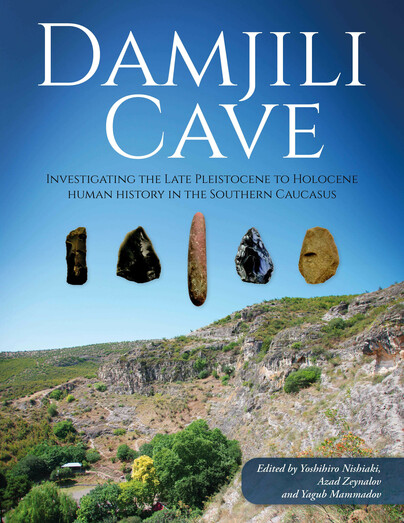Google Books previews are unavailable because you have chosen to turn off third party cookies for enhanced content. Visit our cookies page to review your cookie settings.
Damjili Cave (Hardback)
Investigating the Late Pleistocene to Holocene Human History in the Southern Caucasus
Imprint: Oxbow Books
Pages: 256
Illustrations: 160 B/W and color illustrations
ISBN: 9798888571804
Published: 15th February 2025
Script Academic & Professional
Pages: 256
Illustrations: 160 B/W and color illustrations
ISBN: 9798888571804
Published: 15th February 2025
Script Academic & Professional
You'll be £55.00 closer to your next £10.00 credit when you purchase Damjili Cave. What's this?
+£4.99 UK Delivery or free UK delivery if order is over £40
(click here for international delivery rates)
Order within the next 5 hours, 23 minutes to get your order processed the next working day!
Need a currency converter? Check XE.com for live rates
(click here for international delivery rates)
Order within the next 5 hours, 23 minutes to get your order processed the next working day!
Need a currency converter? Check XE.com for live rates
Modern archaeological research carried out since the late 19th century has sufficiently demonstrated that the beginning of the food production economy and the establishment of a farming society had a significant impact on the shaping of subsequent human history. Accordingly, these processes of Neolithization have attracted a great deal of interest from archaeologists and anthropologists worldwide. The South Caucasus, i.e. the region discussed in this book, has remained one of the least studied regions in a modern sense. However, the research situation has improved remarkably since the 2000s, for a number of reasons, above all the increasing efforts of local and international archaeologists in collaboration.
Since 2008, the Azerbaijan–Japan Archaeological Mission has played a major role in elucidating the origins and developments of the earliest farming communities in the South Caucasus, conducting a series of field campaigns in West Azerbaijan. The remarkable achievements made thus far include the establishment of a secure chronological framework for understanding the Neolithization processes in the early 6th millennium BC through the excavations of two important Neolithic sites: Göytepe and Hacı Elamxanlı Tepe in the Tovuz region, representing the early and late phases of the Neolithic of the South Caucasus, respectively, dating from the early 6th millennium BC.
This volume presents a set of archaeological evidence obtained from the Azerbaijan–Japan excavations in 2016–2022 at Damjili Cave, West Azerbaijan. The cave contained cultural layers from the Mesolithic period in particular, along with Neolithic, Chalcolithic, Bronze Age and medieval material indicating a very long sequence of use. Earlier explorers recorded Middle Palaeolithic lithic artifacts, though no tools of this period were recovered during the recent program of work. Ten small trenches were excavated, revealing a considerable depth of deposits. Mesolithic lithic materials provided evidence for obsidian blade production. Neolithic levels, that included some amorphous limestone block structures, hearths and pits, produced flaked and ground stone tools, pottery and bone objects. Part of the cave at least was utilized in the medieval period with evidence for some built structures and several burials. A program of environmental sampling and both radiocarbon and luminescence dating were undertaken. Through combining the records of the late (Göytepe), early Neolithic (Hacı Elamxanlı Tepe), and Mesolithic (Damjili Cave) periods, our understanding of the Neolithization processes of the South Caucasus will be greatly improved. Data from a combination of three chronologically different sites provide the first opportunity to observe Neolithization processes with secure stratigraphic evidence in a small region of West Azerbaijan.
Other titles in Oxbow Books...















